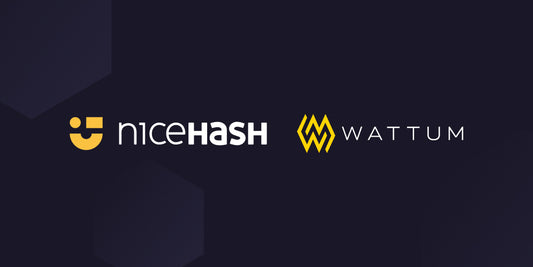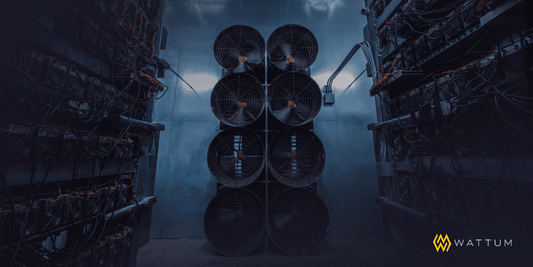Energy consumption is one of the most significant criticisms of Bitcoin mining, perceived as wasteful and as having negative impacts on the surrounding environment, but there’s more to it than that. Perhaps one of the largest missed opportunities, often overlooked in the power cycle, is energy curtailment.
Energy curtailment demonstrates how Bitcoin mining can utilize energy that would otherwise have gone to waste, reducing its actual impact on global energy usage.
What is Energy Curtailment and Why Should We be Concerned?
Energy curtailment is the deliberate reduction in power output below capacity due to transmission constraints or supply and demand constraints. This financial and energy waste is typically due to lack of demand, which is where Bitcoin comes in.
Curtailment of solar power typically occurs at noon when generation is at the highest point. This is exemplified by the duck curve, a metric commonly tracked in places where a high percentage of energy consumed is renewable, like California. The metric shows the disparity between supply and demand of renewable energy, exacerbated by the high storage costs for storing electricity. In California alone, more than 346GWh of solar and wind was curtailed in 2018, and it’s only expected to rise in the future alongside household energy consumption.
This is a global issue, as curtailment plagues regions beyond North America. In 2017, China curtailed 7.3 TWh of solar power and the UK curtailed 1.49 TWh of wind power. Existing methods to utilize all available energy may require costly methods such as building new transmission lines or Energy Storage Systems, which are both more expensive than letting surplus power go to waste. By routing excess energy to Bitcoin miners, grid operators actually make money rather than spending it on less effective, more expensive alternatives.
While renewable energy is now less expensive than traditional energy sources, this issue of curtailment has discouraged the build-out of new clean energy projects. In 2015, China installed some 33 gigawatts of wind turbines, which was more than half of new wind installations globally. However, about 15% of energy production that year was wasted, a huge leap from 8% in 2014. This is 33.9 billion kilowatt-hours of wind-powered electricity, or equivalent to the annual electricity consumption of 3 million American households. Therefore, finding an efficient way to minimize curtailment could be the key to a carbon-neutral future.
As renewable energy continues to grow, investors (plant operators), distributors (grid operators), and customers alike will continue to grapple with the growing pains of increasing variability in the power supply.
Creating a Win-Win Situation with Bitcoin Mining
Bitcoin mining, due to its endless appetite for power, is a natural fit for an energy efficiency approach called demand response. Demand response programs make power consumption more efficient by giving consumers (mining facilities) the opportunity to increase power consumption during low energy hours, and reduce consumption during peak demand hours. This focuses on altering demand rather than altering supply to solve the issue. This approach is also more profitable, for both energy providers and data center operators, as otherwise unused energy is purchased and Bitcoin is produced for miners. It is a win-win situation.
Bitcoin mining actually provides more advantages over traditional types of demand response. Bitcoin mining boasts quick speed to scale, reliability and predictability for grid operators, high sensitivity to price incentives, 24/7 operations that can easily be decreased, and non-time-sensitive computation, meaning unplanned shut offs will not highly disrupt the business. This provides benefits for both grid operators and miners, creating the foundation for a strong, mutually beneficial partnership.
The need to curtail excess production of renewable energy to maintain the balance between supply and demand and thereby avoid zero, or negative electricity prices opens opportunities for deploying Bitcoin mining as the last resort energy buyer. Situating the Bitcoin mining machines at the generation side of existing solar and wind farms is an attractive solution to mitigating the curtailment issue faced by utility scale renewable plant operators worldwide.
Aker Solutions, a global energy solutions and digital products provider, has established a subsidiary Seetee, which focuses on Bitcoin mining. Majority shareholder Kjell Inge Røkke shared in Aker’s investor letter: "Seetee will establish mining operations that transfer stranded or intermittent electricity without stable demand locally—wind, solar, hydro power— to economic assets that can be used anywhere. Bitcoin is, in our eyes, a load-balancing economic battery, and batteries are essential to the energy transition required to reach the targets of the Paris Agreement."
Companies around the world are gradually realizing the benefits Bitcoin can provide when it comes to energy production, and curtailment is only part of the puzzle. Wattum Management is available to work with miners and energy producers to implement Bitcoin mining as a profitable, sustainable solution to curtailment. Contact our experts today to find out how you can sell your excess energy to the Bitcoin network.



